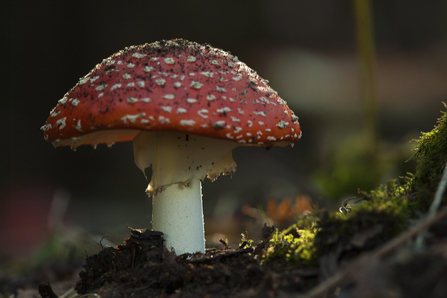Deadwood comes in all forms and sizes – a standing or fallen dead tree, the stump of a cut tree, dead branches of a tree or even dead shrubs. Despite its name, deadwood is full of life and provides a vital home for many woodland plants and animals.
From the smallest hoverfly to the mighty owl, around 40% of woodland wildlife is at least partially dependent on deadwood habitats. In the UK, around 2,000 invertebrate species are saproxylic – reliant on dead or decaying wood for either a part or all of their life cycle. If you have ever done a minibeast hunt in the forest, you will have seen lots of creepy-crawlies when you lift a log.


